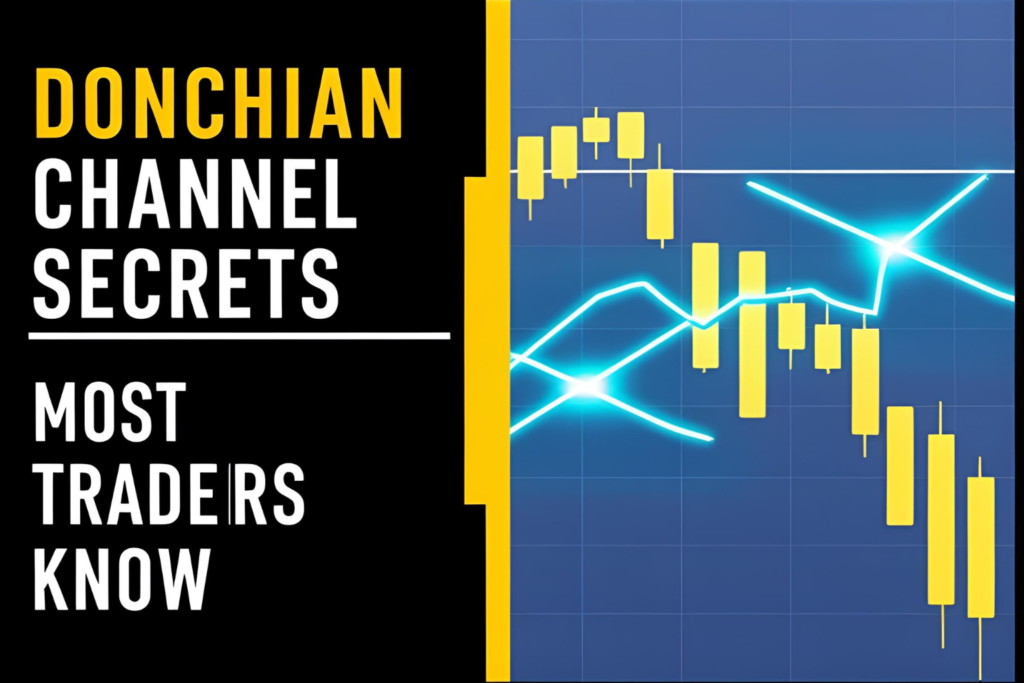The Donchian Channel is a powerful breakout and trend-following indicator, but like any tool, it’s only effective when used correctly. Many traders—especially beginners—make avoidable mistakes that lead to losses, confusion, or missed opportunities.
In this post, we’ll cover the most common Donchian Channel mistakes, how they affect your trades, and how to fix them for better results.
Mistake #1: Entering on a Wick Instead of a Close
The Problem:
Some traders enter a trade the moment price touches the upper or lower band—even if it’s just a wick. This leads to false breakouts and early entries.
The Fix:
✅ Always wait for a confirmed candle close beyond the band before entering.
Mistake #2: Using It in Ranging or Choppy Markets
The Problem:
The Donchian Channel performs poorly in sideways markets, often generating false signals that lead to whipsaws.
The Fix:
✅ Use a trend filter like the 50 EMA or ADX indicator.
✅ Trade only when a clear trend is present.
Mistake #3: Ignoring Volume
The Problem:
Not all breakouts are created equal. Breakouts without volume confirmation are more likely to fail.
The Fix:
✅ Only take trades when the breakout occurs on above-average volume.
Mistake #4: Not Adjusting the Period for the Timeframe
The Problem:
Using the default 20-period Donchian Channel for every chart doesn’t always work.
The Fix:
✅ Adjust the period based on your trading style:
- 10–15 for scalping or intraday
- 20–30 for swing trading
- 50+ for long-term positions
Mistake #5: Setting Stop-Loss Too Tight
The Problem:
Placing stop-losses just below the entry or inside the channel results in premature exits.
The Fix:
✅ Use the opposite Donchian Band as a logical stop-loss level.
✅ Alternatively, use ATR-based stops for volatility protection.
Mistake #6: Overcomplicating the Setup
The Problem:
Traders often combine too many indicators with the Donchian Channel, diluting its effectiveness.
The Fix:
✅ Keep it simple: Donchian + 1 or 2 confirmation tools (e.g., volume, moving average).
Mistake #7: No Backtesting or Journal Review
The Problem:
Using the Donchian Channel without testing your setup leads to emotional trading and inconsistency.
The Fix:
✅ Backtest your strategy using historical data.
✅ Keep a trading journal to track and refine your approach.
Conclusion
The Donchian Channel can deliver consistent results when used properly—but ignoring these common mistakes can cost you trades and confidence. The key to success is discipline, confirmation, and a clear set of rules.
By recognizing and fixing these Donchian Channel mistakes, you’ll trade with more clarity, fewer losses, and a better understanding of what really works.
FAQs
Q1: Can I use Donchian Channel alone?
Technically yes, but adding a confirmation tool like volume or RSI improves accuracy.
Q2: Is the 20-period setting always best?
Not always. Adjust based on timeframe and market volatility.
Q3: Should I use it during news events?
No. Avoid trading around major news releases, as volatility can cause fake breakouts.
Q4: Do these mistakes apply to all markets?
Yes. Stocks, forex, crypto, and futures—these principles hold true.
Q5: How do I know if I’m in a choppy market?
Use ADX (below 20 = no trend) or look for flat moving averages and overlapping candles.

